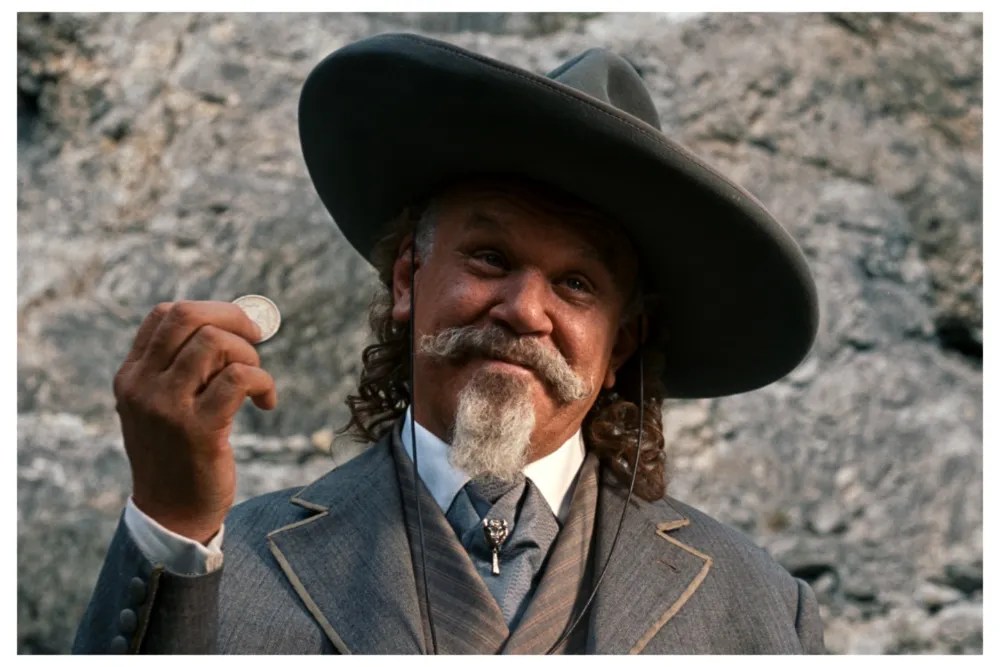Early on in beloved animation director Sylvain Chomet’s “A Magnificent Life” (French title “Marcel et Monsieur Pagnol”), septuagenarian Monsieur Pagnol laments that to write a memoir, one needs memories, but those he has none of any more. Lo and behold, a jaunty young boy, Marcel, soon comes to him.
To have an avatar of your childhood self arrive in timely fashion to resuscitate your fading belief in the brilliance of your internationally applauded, multi-hyphenate career, is a master projection of the ego. It’s the kind of attestation that acclaimed Japanese filmmaker Hirokazu Kore-eda, for instance, wouldn’t frown upon, given that his 1998 film, “After Life” (translated in Japanese as “Wonderful Life”) is about dead characters arriving at a way station to collaborate with its staff in creating a short film of their single most cherished memory before they pass on. Kore-eda’s characters don’t know yet that they need their lives to be affirmed. Magic — and narrative — lies in that innocence.
By contrast, in “A Magnificent Life,” Chomet’s pedantic, hagiographic if also imaginative and transportive recreation of and ode to celebrated 20th century French playwright-filmmaker-novelist Marcel Pagnol’s life (a film encouraged by Pagnol’s grandson Nicolas), when elderly Monsieur Pagnol is commissioned by Elle magazine to write his memoir, he leans on his carefree, out-of-nowhere apparition Marcel to affirm his charmed career. Affirmation, though, Kore-eda would warn, is not an affect of whimsy, it must be aged and earned, not wished or projected.
Chomet, a master storyteller in his own right, whose first and second features, “The Triplets of Belleville” and “The Illusionist,” charmed audiences worldwide and secured him Oscar nominations in the Pixar heyday of the Aughts, sadly and strangely seems to have sidestepped the catharsis a well-wrought narrative can supply, favoring instead a dutifully animated, bullet-pointed Wikipedia-entry style telling of Pagnol’s life. Rushing by in whooshes of chapters named after Pagnol’s numerous famous plays and films, Chomet conveys in textbook fashion that this is a life worthy of memoir, and worthy of the pleasant story device of little Marcel guiding big Marcel. The film runs on an engine at the altar of memory, itself a facile idea since prolific writers who produce feted work don’t wholly rely on retroactive synthesis. The film is then only memorable in some sequences. Magical, it is not.
To be clear, Chomet’s vision delivers plenty of chutzpah, sociality, delectable (and aptly annoying) period French-ness (coming through even in the English dub, watched here for this review), ravishing, superbly researched attention to mise en scene, and accomplished 2-D animation — each shot averaged a hundred drawings, under the purview of Artistic Director Lana Choukroune and Animation Supervisor Xiaopeng Jiao.
Indeed, a brightness of aesthetic, extending to Stefano Bollani’s score, illuminates the film. If “Triplets” could be too woebegone and dry, and “The Illusionist” too somber and restrained, “A Magnificent Life” has the color palette of a 72-Fahrenheit spring day. Even a second-act nighttime scene in a Parisian downpour is far from downbeat. Chomet knows how to conjure a focused, alive mood. However, there’s little by way of interiority of character, insight into the inner workings of a creative genius, or critique—e.g. why did women always leave Pagnol?—leading us to believe that the adult Pagnol could be petty and yet some sort of paragon.
Moreover, “Triplets” took us on an actual beguiling adventure of cackling humor (Bruno is surely the most famous French canine import of 2003!), and “The Illusionist” allowed us to experience the melancholy of its protagonist fading gradually on his own terms. In comparison, Chomet’s third animated feature (after a gap of a decade and a half) lacks a sustained emotionality. We don’t connect with Pagnol on a human level, he appears as a series of remembered ideas and grand gestures. So unless you’re a diehard Pagnol fan, you are not provided the tools with which to affirm, let alone be meaningfully wowed by his work.
The engines of memory begin churning in Marseille in 1905, when 10-year-old Marcel, sporting a captivating semi-sulk, hopes to be an engineer but in secret writes gems of poems to his doting mother (Géraldine Pailhas), who dies when he is a teen. After graduating, he teaches Latin without success, before he secures a job to move to Paris, a development his wife is unhappy with. Wait, wife, you say? When did that happen? Who even is she? Chomet’s script speeds along faster than the touted pre-TGV Paris-Lyon-Marseille train that brings the couple from Provence into the city that would bring him fame and glory.
In Paris, the animation becomes truly splendid under this connoisseur extraordinaire of a director. Clean lines, a loving interpretation of faces, and breathtaking frames of disparate objects, architectural details, and lighting levels would make an instant celebrity of any protagonist who glides through them. Pagnol continues to teach Latin while writing under the pseudonym Castro. His first play, “The Glory Merchants,” was produced in the mid 1920s and was considered a modest success; his wife, though, leaves him. His next play, “Jazz,” got reluctant approval from his father who wondered how he would make a livelihood, but the subsequent one, “Topaze,” was his first sensation, which in the span of the film occurs a few minutes later. His father liked the latter unconditionally. That’s the entirety of Pagnol’s arc with his father.
With the advent of sound cinema, Pagnol would reach new literary heights when he adapted his plays “Marius,” “Fanny,” and “César” into the famous Marseille film trilogy. During these years, he found a professional network and collaborators, including his agent, and renowned actors of the 1930s Raimu and Fernandel. Chomet portrays Pagnol as a part of a team, rather than a reclusive, egotistic genius, which is refreshing given biopic traps but also frustrating, because we don’t really know we should care for Pagnol in the first place. An exploration of his “habitus” — sociologist Pierre Bourdieu’s concept describing how acquired predispositions and social and cultural capital layer our interaction with the world — is largely avoided.
If this partial summary feels rushed and cursory, it’s to further illustrate the film’s lack of substance and story. How you wish Chomet had dipped his toes in the emotional maximalism of films with sunny temperaments, such as Roberto Benigni’s “Life Is Beautiful.” A brief scene in the middle after Pagnol’s father dies is unexpectedly affecting. Pagnol returns to Marseille and is greeted by his brother Paul, a goatherd. Constructed as an intergenerational visitation, the brothers’ reunion hits a rich vein of intimacy, elevated by a mysterious tone of faith and the afterworld. Just the suggestion of a relationship is enough to feel Pagnol’s loss. Many more of these moments would have rounded out Pagnol as a worthy sire beyond his literary laurels.
For a film about a man who wrote across media, so many frames are joyous paintings — rigorous, curated, idiosyncratic, and intensely social. The facial expressions are oft a thing of beauty. The look book version of this film would be surely a document to behold. The comics, a swift purchase. Because in the gutters — of which there are precious few in the Chomet — there would teem the magnificent tumults and silences that constitute and propel a life.
Grade: C+
“A Magnificent Life” world premiered in the Special Screenings section of the 2025 Cannes Film Festival. It has been acquired by Sony Pictures Classics for North American distribution.



